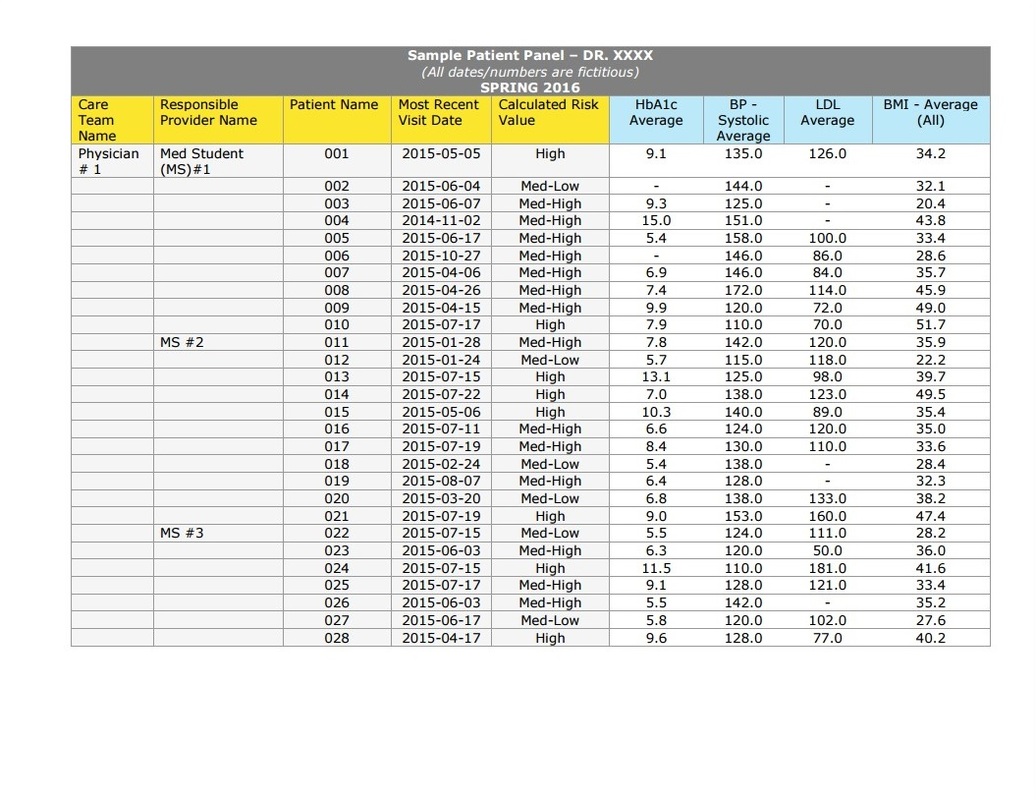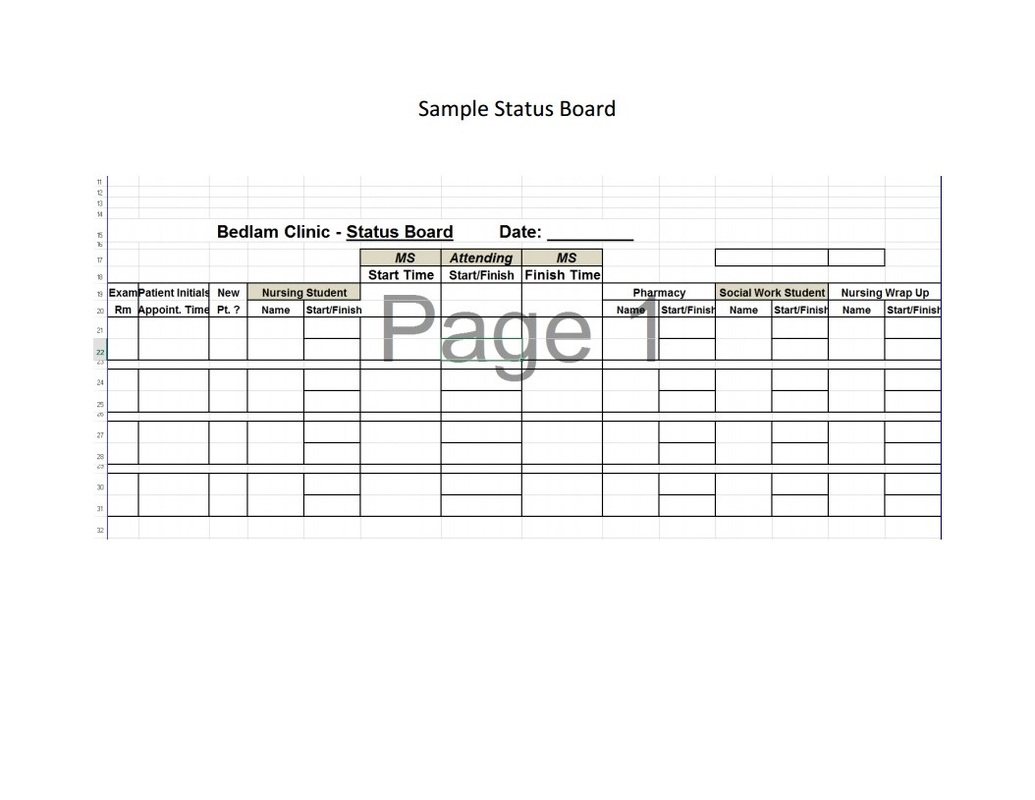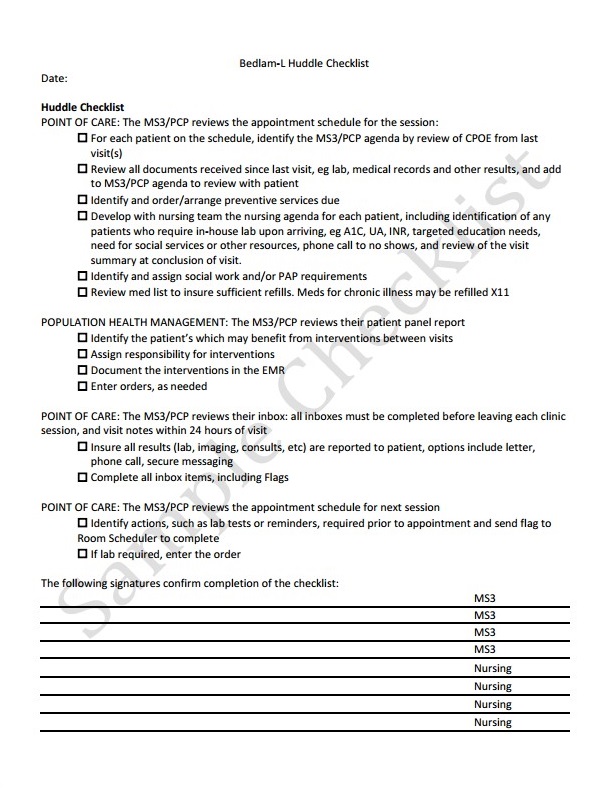PI: Emma Kientz, MS, APRN-CNS, CNE
Assistant Professor; Site Coordinator - Tulsa
College of Nursing – Tulsa
Assistant Professor; Site Coordinator - Tulsa
College of Nursing – Tulsa
The objective of this small grant program was to develop a manuscript that highlighted the journey, including the lessons learned and outcomes, which have transpired since the original 2007 IPE Institute Project. While not all original goals and objectives were met, many other unplanned positive actions were implemented. Some of the activities in the interprofessional student-run longitudinal clinic for indigent and uninsured adult populations that were created or evolved include:
1. Quarterly Retreats to highlight the application of microsystems of care, lean management, and panel management within the clinic.
2. Process Improvements:
4. Population Health Management and Age Appropriate Screenings:
While there were times when the momentum seemed to wane, the spirit of interprofessional care has not wavered. Efforts by faculty to have our students work collaboratively are much more a way of thought now compared to 10 years ago.
1. Quarterly Retreats to highlight the application of microsystems of care, lean management, and panel management within the clinic.
2. Process Improvements:
- A detailed outline of Roles and Responsibilities within the clinic was prompted.
- Streamlining clinic processes utilizing a Status Board was initiated.
- Team based interventions were also incorporated with rapid cycle improvements; (i.e. process for stool guaiac)
4. Population Health Management and Age Appropriate Screenings:
- Annual Diabetic Day to focus on screenings and prevention of complications; including targeted diabetic education was initiated in 2008 and continues to date.
- Annual Prevention Day to focus on health screenings and testing was initiated in 2009 and continues to date.
While there were times when the momentum seemed to wane, the spirit of interprofessional care has not wavered. Efforts by faculty to have our students work collaboratively are much more a way of thought now compared to 10 years ago.
impact
|
Established a student-run clinic. |
Streamlining clinic processes utilizing a Status Board was initiated. |
A detailed outline of Roles and Responsibilities within the clinic was prompted.
aptr project proposal for 2007/2008
ipe institute
ipe institute
|
In 2007, a team of three faculty (nursing, social work, pharmacy) one practitioner (P.A.) and three students (nursing, social work, medicine) attended the Association of Prevention Teaching and Research Interprofessional Prevention Education Institute. The original plan for our Interprofessional Education (IPE) project focused on activities to prevent disease and complications of disease, namely chronic diseases such as diabetes and hypertension in the interprofessional student-run longitudinal clinic for indigent and uninsured adult populations. The foci of the project included:
|
Sustained the post-institute IPE activity or project after the initial year of implementation: Yes, with few modifications |
- Student Education: Through creation and implementation of patient protocols
- Patient Education: Through personalized diabetic classes on diet, medications, exercise, complications, and self-management. Plans were to include other chronic conditions and also reach a larger portion of the community.
- Intervention Protocols: Comprehensive assessments were performed on new patients and data entered in the disease registry, a tool for protocol application.
- Protocol Activation, Follow-up, and Home Visitation: During ‘round-up’ and ‘round-down’, protocol activation, individualized intervention and follow-up were outlined.
Current ipe activity/project
description
description
Our original project activities were initiated due to the perfect environment that we had at hand. We are part of an academic health center, with many of the health disciplines on the Tulsa campus, and all under one roof. We had an interprofessional student-run longitudinal clinic for indigent and uninsured adult populations that had medical, nursing, pharmacy, and social work students learning and practicing together. Our IPE activities were a perfect “next step” to ensure students were learning the latest and ‘best practices’ in the current health care system, all while learning together. In addition, the faculty involved in the clinic were interested in IPE activities.
Analysis based on Farnsworth et al. (2015) Four-Frame Model
“Addressing and harmonizing the relevant structural, human resource, political and symbolic
frames or dimensions of IPE is essential to effectively implement and sustain IPE"
“Addressing and harmonizing the relevant structural, human resource, political and symbolic
frames or dimensions of IPE is essential to effectively implement and sustain IPE"
Structural Dimension:
Our clinic environment is housed within a University system that meets high accreditation standards, and houses formal policies and procedures. The interprofessional student-run longitudinal clinic allows students to learn their respective professional curriculums in addition to interprofessional skills to care for chronic disease patients as well. The clinic, while home to provider teams, is small enough to allow for flexibility to improve processes involved. The clinic, in existence since 2006, has provided a much needed gap in the community.
Our clinic environment is housed within a University system that meets high accreditation standards, and houses formal policies and procedures. The interprofessional student-run longitudinal clinic allows students to learn their respective professional curriculums in addition to interprofessional skills to care for chronic disease patients as well. The clinic, while home to provider teams, is small enough to allow for flexibility to improve processes involved. The clinic, in existence since 2006, has provided a much needed gap in the community.
Human Dimensions:
The population we work with has such a great need and are so appreciative of the services provided. One of the key factors to the success of the clinic is the input and buy-in from the supervising faculty. While there is no formal faculty development with the program, there are many opportunities to learn more about IPE in campus offerings throughout the university system as well as learning opportunities via the Quarterly Retreats. Some providers have changed over the past 10 years, but those who have been involved since the inception, are often sought out for advice and feedback on clinic function. The involved faculty are engaged, and ideas can be brought forth for clinic improvement and piloted; sometimes the ideas are eventually adopted and/or discarded.
The population we work with has such a great need and are so appreciative of the services provided. One of the key factors to the success of the clinic is the input and buy-in from the supervising faculty. While there is no formal faculty development with the program, there are many opportunities to learn more about IPE in campus offerings throughout the university system as well as learning opportunities via the Quarterly Retreats. Some providers have changed over the past 10 years, but those who have been involved since the inception, are often sought out for advice and feedback on clinic function. The involved faculty are engaged, and ideas can be brought forth for clinic improvement and piloted; sometimes the ideas are eventually adopted and/or discarded.
Political Dimensions:
Since establishment of our initial proposal, efforts of interprofessional opportunities have spread throughout the colleges on the campus and are most evident today in simulation activities. In 2014, the College of Nursing lead efforts to provide an interprofessional simulation using standardized patients on child abuse recognition with students from medicine, nursing and social work. This simulation continues to be repeated each April – National Child Abuse Month. In spring 2015, an interprofessional simulation on domestic violence was also added. With new and improved simulation spaces, more interprofessional social simulations can occur as well. Interprofessional education remains a high priority on the College of Nursing, and with the other professions within the Health Sciences Center (HSC).
Since establishment of our initial proposal, efforts of interprofessional opportunities have spread throughout the colleges on the campus and are most evident today in simulation activities. In 2014, the College of Nursing lead efforts to provide an interprofessional simulation using standardized patients on child abuse recognition with students from medicine, nursing and social work. This simulation continues to be repeated each April – National Child Abuse Month. In spring 2015, an interprofessional simulation on domestic violence was also added. With new and improved simulation spaces, more interprofessional social simulations can occur as well. Interprofessional education remains a high priority on the College of Nursing, and with the other professions within the Health Sciences Center (HSC).
Symbolic Dimensions:
Greater emphasis on IPE has been incorporated throughout the HSC system. Strategic goals for 2016-2017 for the College of Nursing includes increasing IPE initiatives. Research on student attitudes and working in an Interprofessional team are currently underway with the IPE project addressing child abuse.
Greater emphasis on IPE has been incorporated throughout the HSC system. Strategic goals for 2016-2017 for the College of Nursing includes increasing IPE initiatives. Research on student attitudes and working in an Interprofessional team are currently underway with the IPE project addressing child abuse.
|
IPE OFFERINGS INCLUDE:
|
PROFESSIONS/DISCIPLINES/SCHOOLS INVOLVED:
|
lessons/results/outcomes
Lessons Learned:
The IPE clinic follows policies and guidelines as other patient care clinics including the latest in best practices and clinical guidelines. With the healthcare changes over the past 10 years, the clinic has remained flexible enough to adapt to the changes.
Evaluation Results:
While no formal evaluation has been done on the project, the Quarterly Retreats are an avenue to assess ways to continually improve, often utilizing rapid cycle improvements. In addition, each college has its own respective student reflections/course-clinical evaluation component.
Evaluation Results:
While no formal evaluation has been done on the project, the Quarterly Retreats are an avenue to assess ways to continually improve, often utilizing rapid cycle improvements. In addition, each college has its own respective student reflections/course-clinical evaluation component.
Unexpected Outcomes:
It was not anticipated that the PA and Pharmacy Faculty would resign within the first six months of attending the IPE Conference in Washington, D.C. Their engagement and positive attitude towards IPE was encouraging, therefore once they left, the momentum waned a little. While we did not achieve all of our goals, we had many more positive outcomes that fostered IPE, and provided much needed services to our patients. Additional collaborations between a Pharmacy and Nursing faculty yielded support for Diabetic Education classes. And to have Quarterly Retreats where students could engage in quality improvement at the ‘grass roots’ levels, was encouraging.





